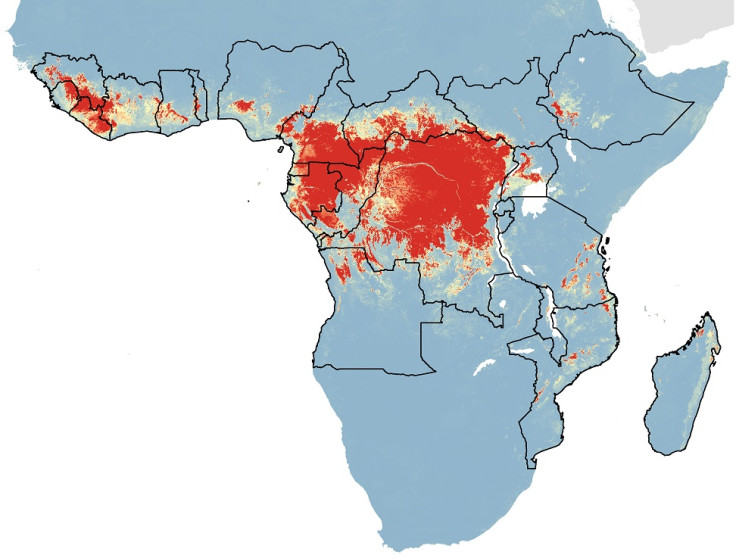Ebola Outbreak: 15 More Countries and 70 Million at Risk of Virus

The deadliest outbreak of Ebola in history could spread to over 15 more African countries and affect up to 70 million people, a study has found.
A map, based on a model created by a team led by University of Oxford scientists, predicts that in animal populations the Ebola virus could be circulating across a vast swathe of forested West and Central Africa.
The area stretches across seven countries which have already reported Ebola transmission from animals to humans, as well as other countries including Ghana, Cameroon, Burundi, the Central African Republic, Tanzania and Madagascar.
The research is the first of its kind to attempt to explain how the virus, which is spread through contact with infected bodily fluids, has moved west across the African continent.
The World Health Organization reported earlier this week that 2,288 people have been killed in the current outbreak, with around half dying within the last three weeks.
For the study, researchers compared previous outbreaks of the virus to its potential transmission in chimpanzees and bats, to predict how the disease could spread.
The virus has been found in three different species of fruit bat, including the hammer-headed bat, Franquet's epauletted fruit bat and the little collared fruit bat. They pass the disease onto other animals, which are eaten by some communities as "bush meat".
So far, there have been only 30 confirmed cases of Ebola transmission from animals to humans, with most instances of transmission thought to arise from close contact through hunting or butchering infected animals.
However, international efforts to control outbreaks of Ebola in humans in West Africa and reports of a separate outbreak in the Democratic Republic of the Congo highlight the importance of being prepared for future outbreaks of the disease so that they can be stopped early.
To generate the model, researchers brought together available data on where human and animal infections have occurred since 1976, when the virus was discovered. The team looked for similarities in environmental factors such as vegetation, elevation, temperature and estimated distribution of bat populations.
The map identifies similar areas where the virus is likely to be carried by animals, where there may be a risk of transmission to humans triggering future outbreaks.
"Although the disease may be found in animals across a wide area, outbreaks are still very rare; very few animals in this region have detectable infections and it is extremely rare for humans to catch the disease from them," said lead author David Pigott, of Oxford University's Department of Zoology.
"Our map shows the likely 'reservoir' of Ebola virus in animal populations and this is larger than has been previously appreciated. This does not mean that transmission to humans is inevitable in these areas; only that all the environmental and epidemiological conditions suitable for an outbreak occur there," said researcher Nick Golding.
© Copyright IBTimes 2025. All rights reserved.






















